For most of us Poly High School is that big I-shaped building on the hill on Conner Avenue at Rosedale Avenue. But an earlier generation would remember the Poly High School on Nashville Avenue at Avenue D. And a still-earlier generation would remember the Poly High School on Nashville at Avenue B.
 The first home of Poly High was built in 1907 on Nashville Avenue at Avenue B (next to where William James Middle School is today) after the Polytechnic school district had formed in 1906. The high school was also called the “Dillow School” in honor of Poly civic leader Samuel Selkirk Dillow. Clip is from the July 7, 1907 Telegram.
The first home of Poly High was built in 1907 on Nashville Avenue at Avenue B (next to where William James Middle School is today) after the Polytechnic school district had formed in 1906. The high school was also called the “Dillow School” in honor of Poly civic leader Samuel Selkirk Dillow. Clip is from the July 7, 1907 Telegram.
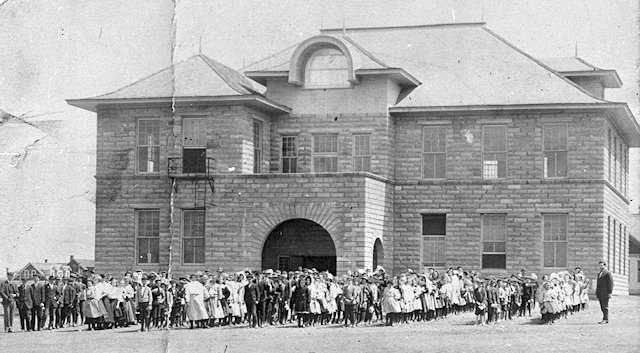 (Photo from University of Texas at Arlington Library Special Collections.)
(Photo from University of Texas at Arlington Library Special Collections.)
 But by 1921 that building, although only fourteen years old, was, in the words of school board secretary S. S. Ogilvie, “hardly safe” and “dilapidated.” Apparently back then Poly kids could wear out a school building as quickly as they could the seat of a pair of knee pants or the soles of a pair of Buster Browns.
But by 1921 that building, although only fourteen years old, was, in the words of school board secretary S. S. Ogilvie, “hardly safe” and “dilapidated.” Apparently back then Poly kids could wear out a school building as quickly as they could the seat of a pair of knee pants or the soles of a pair of Buster Browns.
Ogilvie also said the district needed to sell $265,000 ($3.4 million today) in bonds to continue to operate. He said the high school was already holding half-day sessions because of low funds. But if the bonds were approved, he said, the district would build a new high school three stories high with auditorium, gymnasium, and “all modern school equipment.” Clip is from the June 21, 1921 Star-Telegram.
 Architect Wiley G. Clarkson, as he had for so many other Fort Worth schools, would design the new building. Here are the architect’s sketch from June and the completed building. (Clip is from the June 10, 1921 Star-Telegram; photo is from the 1924 yearbook.)
Architect Wiley G. Clarkson, as he had for so many other Fort Worth schools, would design the new building. Here are the architect’s sketch from June and the completed building. (Clip is from the June 10, 1921 Star-Telegram; photo is from the 1924 yearbook.)
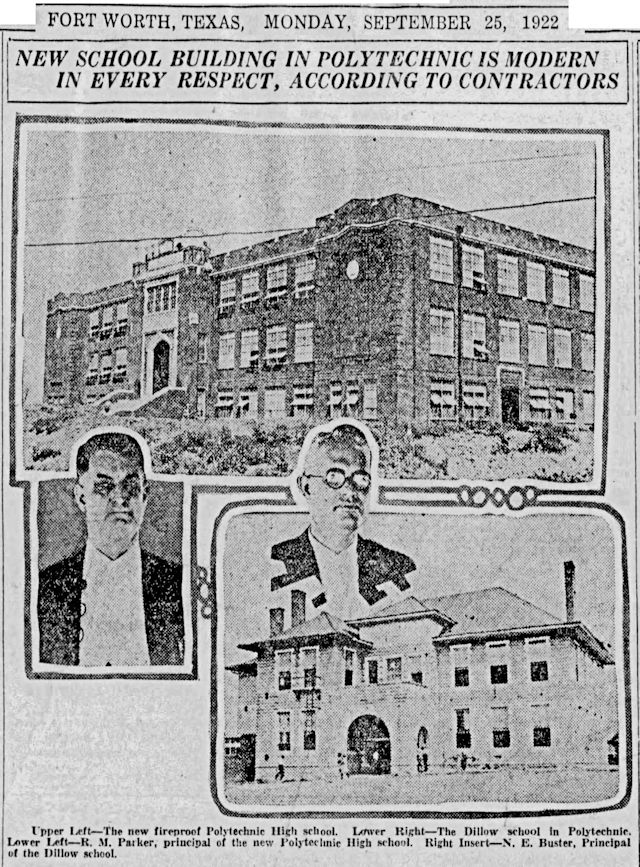 These Fort Worth Record photos of 1922 show the first and second Poly High School buildings.
These Fort Worth Record photos of 1922 show the first and second Poly High School buildings.
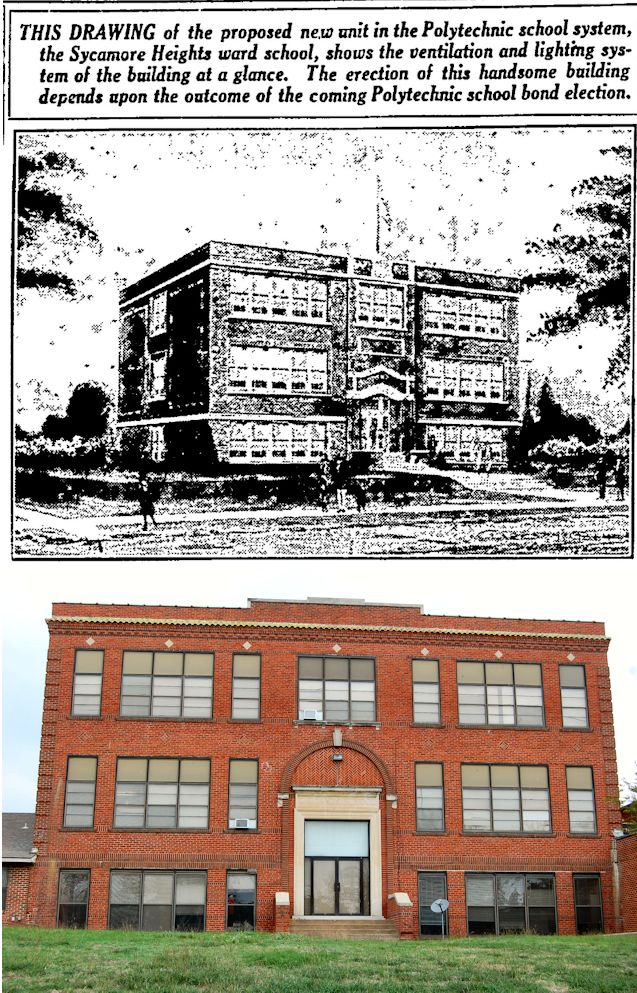 The proposed Sycamore Heights ward school mentioned in the caption probably was Tandy Elementary on Purington Avenue, named for George Tandy, son of Roger. George Tandy died on May 25, 1921. This is the rear of the building facing Mt. Vernon Avenue. Architect’s drawing is from the June 6, 1921 Star-Telegram.
The proposed Sycamore Heights ward school mentioned in the caption probably was Tandy Elementary on Purington Avenue, named for George Tandy, son of Roger. George Tandy died on May 25, 1921. This is the rear of the building facing Mt. Vernon Avenue. Architect’s drawing is from the June 6, 1921 Star-Telegram.
 In June 1921 Poly school district voters indeed approved the bonds and a tax hike. Clip is from the June 26 Star-Telegram.
In June 1921 Poly school district voters indeed approved the bonds and a tax hike. Clip is from the June 26 Star-Telegram.
 The Polytechnic school district administrators were pictured in the 1921 yearbook. S. S. Dillow was president. Lewis Tandy was the son of George Tandy.
The Polytechnic school district administrators were pictured in the 1921 yearbook. S. S. Dillow was president. Lewis Tandy was the son of George Tandy.
 The Poly school district acted quickly, buying a parcel of land on Nashville Avenue at Avenue D, two blocks southeast of the 1907 school, and taking bids on the existing buildings on the land. Clip is from the September 17, 1921 Star-Telegram.
The Poly school district acted quickly, buying a parcel of land on Nashville Avenue at Avenue D, two blocks southeast of the 1907 school, and taking bids on the existing buildings on the land. Clip is from the September 17, 1921 Star-Telegram.
 On December 8, 1921 the school district let a contract for construction. Clip is from the December 9 Star-Telegram.
On December 8, 1921 the school district let a contract for construction. Clip is from the December 9 Star-Telegram.
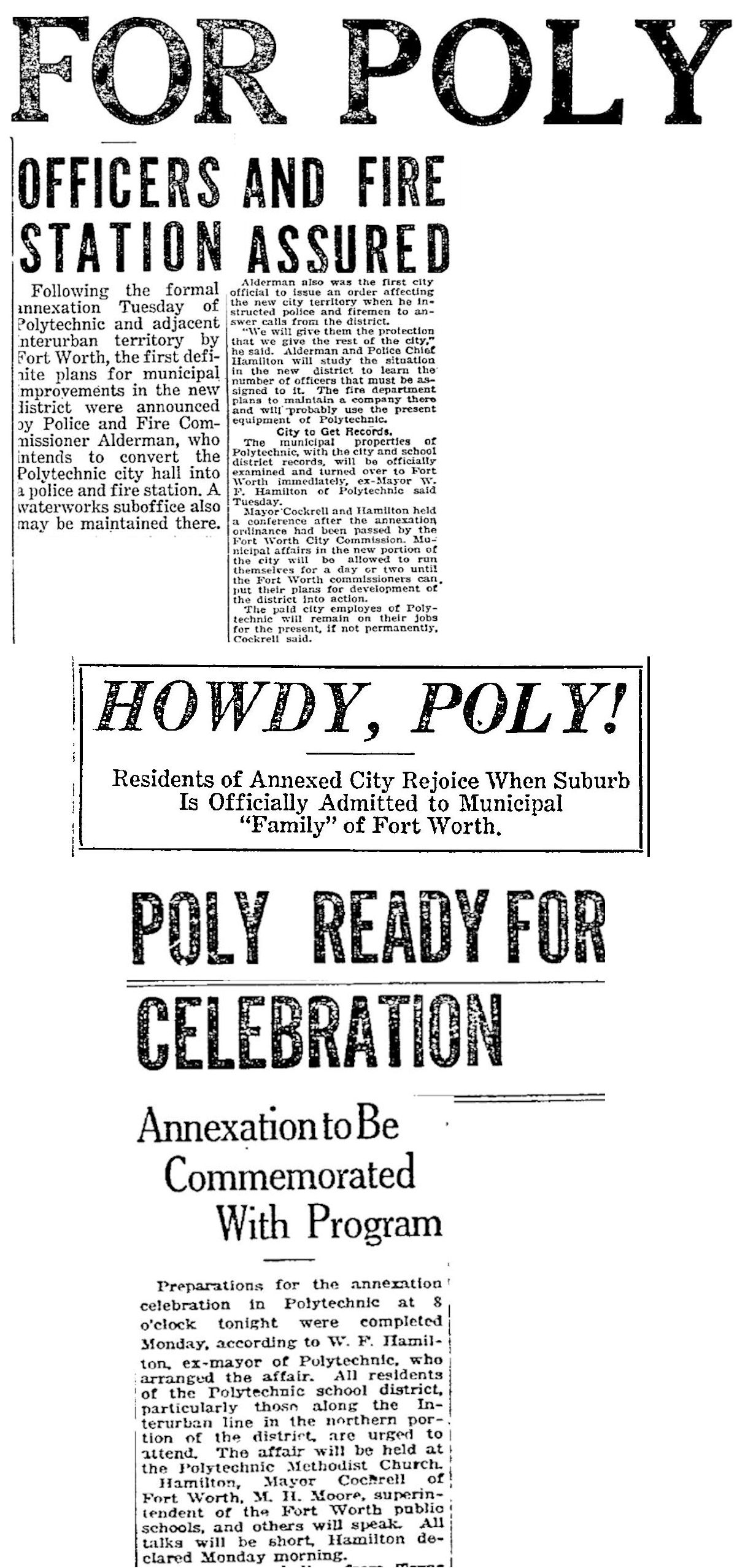 But then came a complication. As the Polytechnic school district was building its new high school, residents of the city of Polytechnic circulated a petition asking Fort Worth to annex Poly. Poly and Fort Worth negotiated a while, and then Fort Worth indeed annexed Poly. Fort Worth also assumed the debts of the Poly school district. Clips are from the January 31 and February 6, 1922 Star-Telegram.
But then came a complication. As the Polytechnic school district was building its new high school, residents of the city of Polytechnic circulated a petition asking Fort Worth to annex Poly. Poly and Fort Worth negotiated a while, and then Fort Worth indeed annexed Poly. Fort Worth also assumed the debts of the Poly school district. Clips are from the January 31 and February 6, 1922 Star-Telegram.
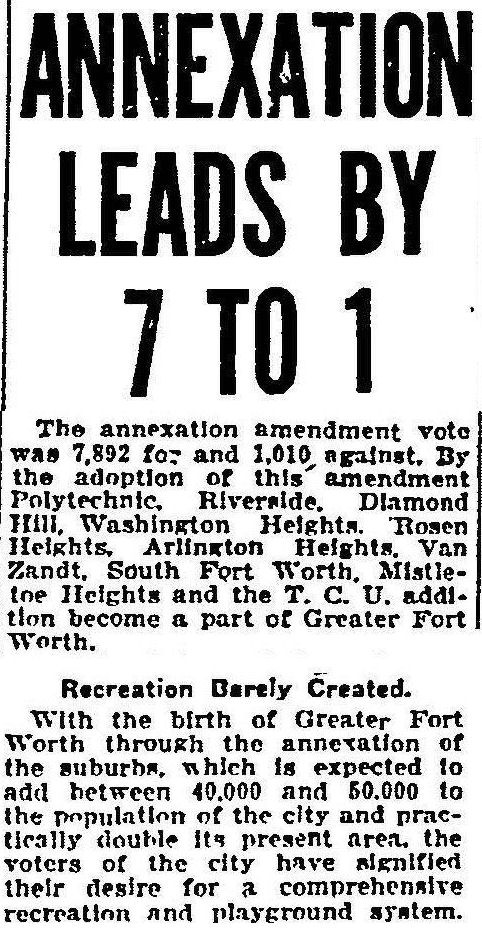 But apparently the legality of the January 31, 1922 annexation was in doubt. On July 22 voters again voted for Fort Worth to annex Polytechnic along with several other suburbs as Fort Worth almost doubled its area. Clip is from the July 23 Star-Telegram.
But apparently the legality of the January 31, 1922 annexation was in doubt. On July 22 voters again voted for Fort Worth to annex Polytechnic along with several other suburbs as Fort Worth almost doubled its area. Clip is from the July 23 Star-Telegram.
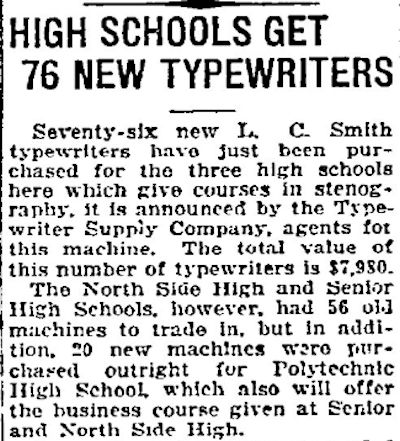 On September 10, 1922 the Star-Telegram announced that the new Poly High School would indeed get some of that “modern school equipment”: new typewriters!
On September 10, 1922 the Star-Telegram announced that the new Poly High School would indeed get some of that “modern school equipment”: new typewriters!
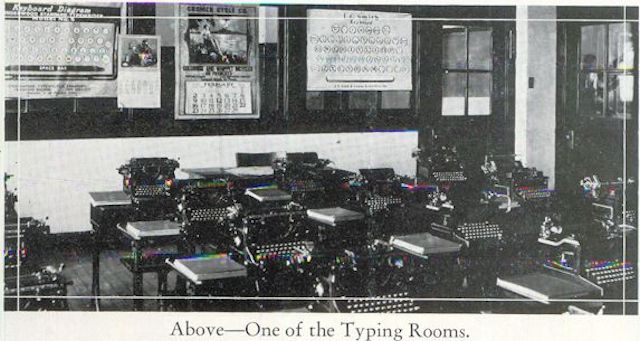 A typing classroom in the 1930 yearbook.
A typing classroom in the 1930 yearbook.
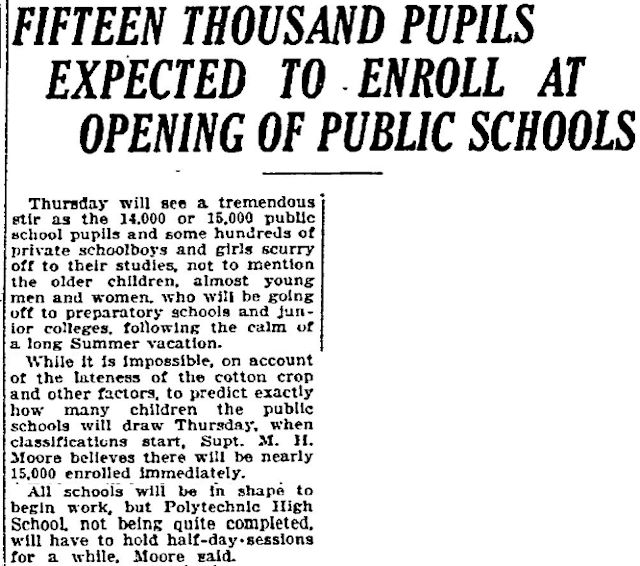 As the 1922 school year began in September, the new high school building was not quite finished, and Poly students were temporarily back where they had been with the old “dilapidated” 1907 school in 1921: attending half-day sessions. Clip is from the September 13 Star-Telegram.
As the 1922 school year began in September, the new high school building was not quite finished, and Poly students were temporarily back where they had been with the old “dilapidated” 1907 school in 1921: attending half-day sessions. Clip is from the September 13 Star-Telegram.
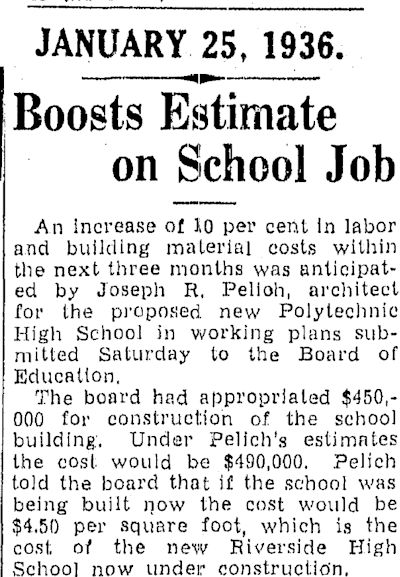 Fast-forward to 1935. The third Poly High School building was being planned and was already over budget, according to architect Joseph Pelich.
Fast-forward to 1935. The third Poly High School building was being planned and was already over budget, according to architect Joseph Pelich.
 But the building got built, and in 1938 Poly High School moved west three blocks to its third home, on Conner Avenue. The 1922 building became Poly Elementary School. The 1922 building was demolished in the 1970s and replaced by a vacant lot. That vacant lot still stands.
But the building got built, and in 1938 Poly High School moved west three blocks to its third home, on Conner Avenue. The 1922 building became Poly Elementary School. The 1922 building was demolished in the 1970s and replaced by a vacant lot. That vacant lot still stands.
The cornerstone of the 1922 Poly High building is on display in the current Poly High building.

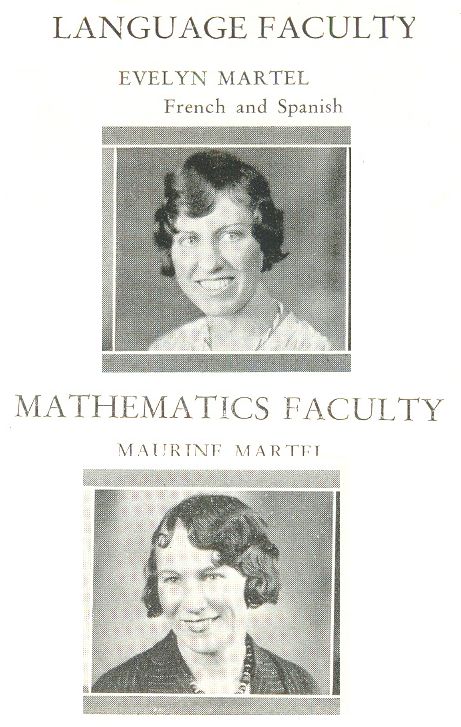 Some teachers who had taught in the second building in the 1930s were still teaching in the third building in 1966. The 1930 yearbook included “Prof” Dunkelberg, Miss Rose, and the Martel sisters.
Some teachers who had taught in the second building in the 1930s were still teaching in the third building in 1966. The 1930 yearbook included “Prof” Dunkelberg, Miss Rose, and the Martel sisters.
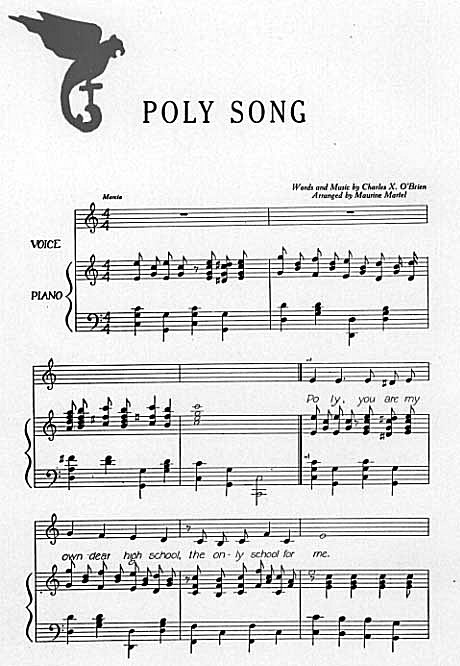
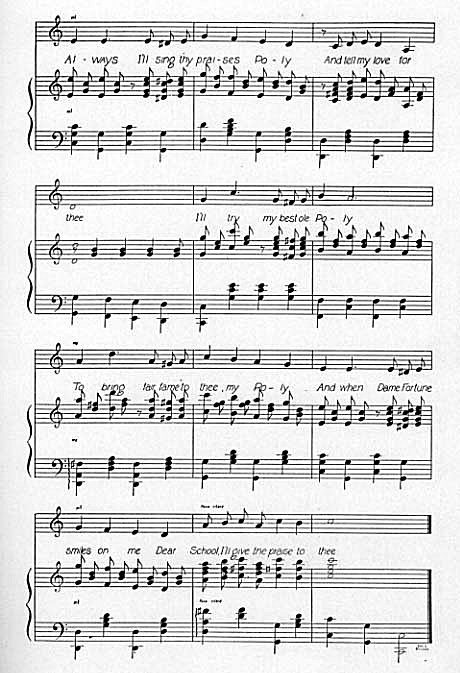
Maurine would teach at Poly more than forty years and would arrange the school song.
 Poly High School was known for years for its music program, so it was fitting that one of the first activities in the new school building was a band clinic in 1938.
Poly High School was known for years for its music program, so it was fitting that one of the first activities in the new school building was a band clinic in 1938.
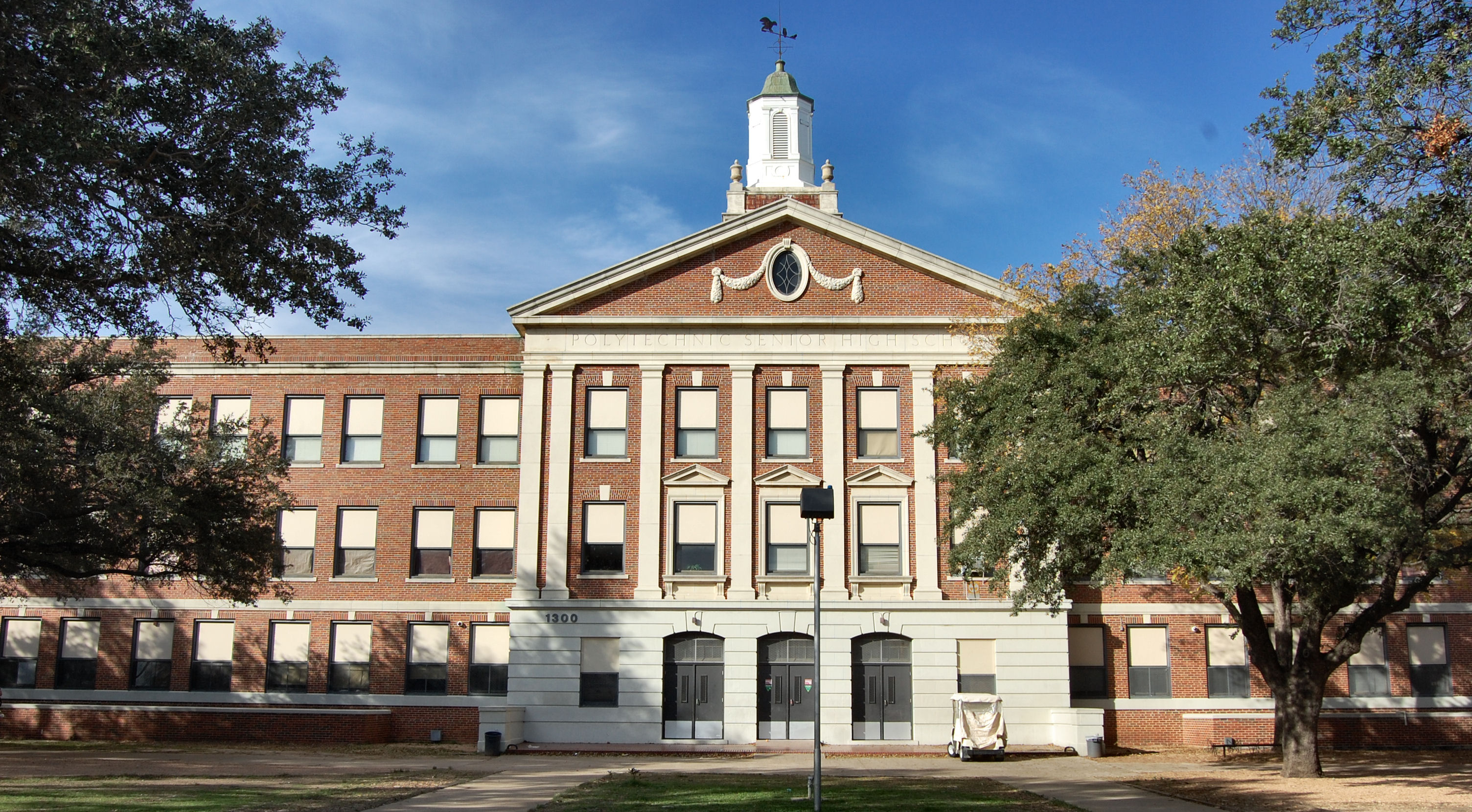 In contast to the first Poly High building, which was deemed “dilapidated” after just fourteen years, and to the second Poly High building, which served as the high school just sixteen years, the current Poly High building, although eighty years old, remains in excellent condition.
In contast to the first Poly High building, which was deemed “dilapidated” after just fourteen years, and to the second Poly High building, which served as the high school just sixteen years, the current Poly High building, although eighty years old, remains in excellent condition.
Seems we Poly kids have just stopped trying.
Posts About Education in Fort Worth






Thanks for writing this. I think my great grandparents went to poly (prior to 1940) and I know my grandparents did (prior to 1963). We thought my great grandparents must have gone to another school while poly was being built, but maybe they were just at location two?
Thanks, Tracy. I have never been able to find much about the opening of the three buildings, but I think the students of the 1922 building just stayed there until the Connor building opened in autumn 1938. I don’t think there was a need for an interim location.
All four of the aforementioned teachers were still there when my husband and I graduated in 1958. I loved Prof. He taught me what little chemistry I remember.
I did not know some of the history about Poly. Thanks for adding to my knowledge, Mike.
Thanks, Beverly. All four were still there in 1966, but by 1967 Prof and Maurine Martel had retired.
A great deal of school property destruction was done in the 1970s with so little regard for history. There seemed to be a pervasive belief in the district that that old unused properties were dangerous and too expensive to make useful. There were a few exceptions (thank goodness), but many old structures did disappear. I taught at North Side High from 1971 to 2007. We lost a shelter house overlooking the Trinity River because the principal at the time could not keep students from smoking there at lunch. And a beautiful amphitheater was covered with construction rubble and dirt because it was deemed unsafe and of no further use.
I have often wondered why some—the 1922 Poly High, Peter Smith, West Van Zandt, D. McRae Elementary among so many—fell while a few—Stephen F. Austin, Alexander Hogg, the second Fort Worth High, Tandy Elementary—have stood and should be inspirations for preservation. And I imagine that many people would be surprised to know that schools such as Poly, Paschal, and North Side had amphitheaters at one time.
I, for one did not appreciate the rich history of the school building I knew as poly elementary for 6 years. If those halls could talk. I also “patrolled” the 4 corners of that block. Seemed bigger back in the 50s.
It still makes me mad that the building was demolished. Paid money to put it up, paid money to tear it down. And thirty-plus years later, there the vacant lot sits.